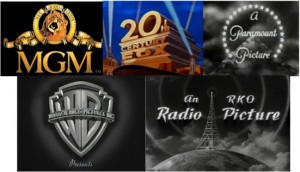Ok guys, so this may just be the most important post that I will have on here. This week I wanted to delve into one of my favorite eras of film to pull out the real unrealized gem of the older cinema: movie musicals.
Now, most of you upon hearing the word “musical” either inwardly cringe in horror or distaste, or you think of movies like High School Musical (2006) or Les Miserables (2012). I love these as well (I am a theatre kid after all) but many of my favorite films are the musicals made during the “studio system” of Hollywood.
So, the studio system. Odds are not many of you have ever heard of such a thing. Believe it or not, I didn’t either until Junior year in my Study of Film class. Even if you haven’t heard of the era, you have certainly heard of many of the movies. For example, Singin’ in the Rain (1952) and The Wizard of Oz (1939). Believe it or not, these films were filmed, edited and processed in the course of only a couple of weeks. That was just how the Studio System worked.
The Studio System proved to be the most effective way to make movies which is why from the 1920’s to the 1960’s this was the dominant way of producing films. The Studio System worked as exactly what it sounds like: a system. A certain number of actors and actresses were contracted to a certain studio (usually one of the “Big Five”: MGM, Paramount, RKO Radio, Warner and Fox) and only made pictures for that studio. So Judy Garland, who was contracted by MGM, was never allowed to do films with Paramount or Fox.

The only breach of this code that I know of happened on a film called Sergeant York (1941) and the real life Sergeant York requested that a certain actor (Gary Cooper) be the only one to portray himself. It was only through much legal difficulty and a trade of an actress (Bette Davis) that this move was allowed.
But the easiest movie to make during the studio system was actually musicals. The studios cranked out hundreds of them. And why wouldn’t they when stars like Gene Kelly (Singin’ in the Rain) and Frank Sinatra (Guys and Dolls)? In the 30’s, film had just recently aquired sound and the studios used these “talkies” to showcase the musical and acting talents of their stars. An excellent portrayal of this is actually the movie Singin’ in the Rain which depicts life for actors and actresses as the “talkies” became more prevalent.

And lets not forget the tap dancing! Most movie musicals during that time had some kind of tapping in it. All of them from White Christmas (1954) to Singin’ in the Rain. It is such a skill and actors like Gene Kelly and Donald O’Connor (Singin’ in the Rain) made it look easy!
My favorite studio system movie, however, is Anchors Aweigh (1945). I could spend all day talking about why I love it but here are the top three reasons to close out this post:
- Frank Sinatra-I literally could listen to his beautiful voice all day. And his acting is quite stellar too. He doesn’t get nearly enough credit for how real he appears on film.
- The Gene Kelly/Jerry dance sequence-Little known fact, Gene Kelly actually did a lot of his own choreography. And this movie is no exception. But what is even cooler is the fact that this dance sequence is with an animated character (Jerry from Tom and Jerry). It’s just too cool.
- Little Donald Martin-The film features a little boy that just wants to join the Navy. Although he has that annoying old movie child voice, he’s still a cutie!
Suggestions This Week: Studio System Musicals
The Pirate (1948)
Singin’ in the Rain (1952)
An American in Paris (1951)
Take Me Out to the Ball Game (1949)
White Christmas (1954)
